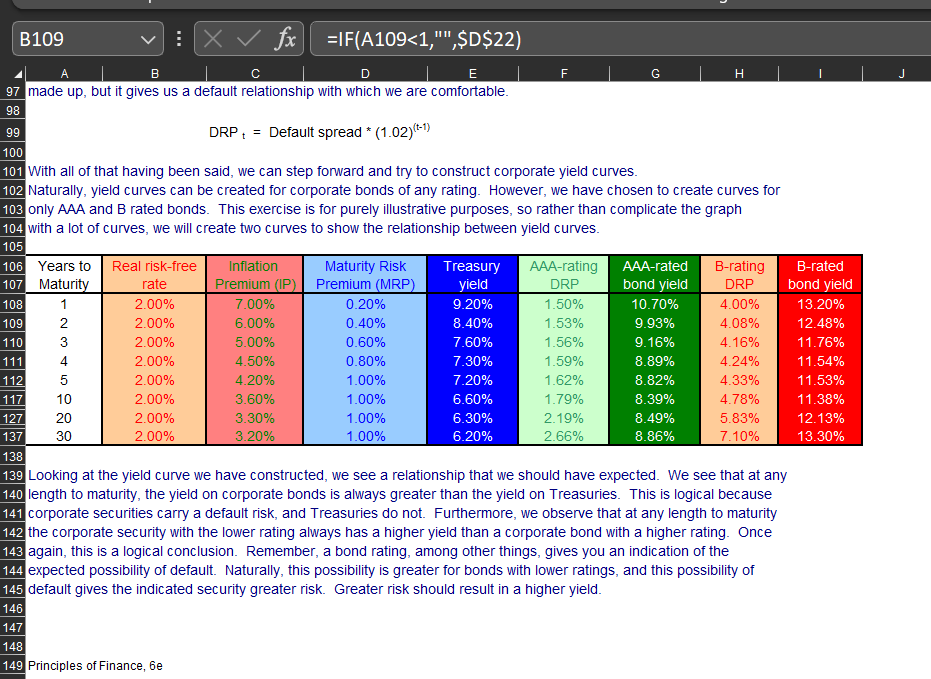5-20-The problem requires you to use File C05 on the computer problem spreadsheet. a.Assume today is January 2, and the expected inflation rates for the next fiveyears are as follows: Year Inflation Rate 1 8.0% 2 6.0 3 4.0 4 3.0 5 5.0 In Year 6 and thereafter, inflation is expected to be 3 percent. The maturityrisk premium (MRP) is 0.1 percent per year to maturity for bonds withmaturities greater than six months, with a maximum MRP equal to2 percent. The real risk-free rate of return is currently 2.5 percent, and it isexpected to remain at this level long into the future. Compute the interest rates on Treasury securities with maturities equal to one year, two years, three years, four years, five years, 10 years, 20 years, and 30 years. Question: I'm not sure what needs to be done on the spreadsheet to get the results.
5-20-The problem requires you to use File C05 on the computer problem spreadsheet.
a.Assume today is January 2, and the expected inflation rates for the next fiveyears are as follows:
Year Inflation Rate
1 8.0%
2 6.0
3 4.0
4 3.0
5 5.0
In Year 6 and thereafter, inflation is expected to be 3 percent. The maturityrisk premium (MRP) is 0.1 percent per year to maturity for bonds withmaturities greater than six months, with a maximum MRP equal to2 percent. The real risk-free
Question: I'm not sure what needs to be done on the spreadsheet to get the results.

Trending now
This is a popular solution!
Step by step
Solved in 2 steps with 2 images

d)Assume that all the information given previously is the same and the defaultrisk premium for corporate bonds rated AAA is 1.5 percent, whereas it is4 percent for corporate bonds rated B. Compute the interest rates onAAA- and B-rated corporate bonds with maturities equal to one year, twoyears, three years, four years, five years, 10 years, 20 years, and 30 years.
Question b) Describe the yield curve that is constructed from the results in part (a)
Question c) Rework part (a) assuming one year has passes- that is, today is January q of Year 2. All other information given in part (a) is the same. Rework part (a) again assuming two, three, four, and five years have passed.
Where does the information on step one comes from?








